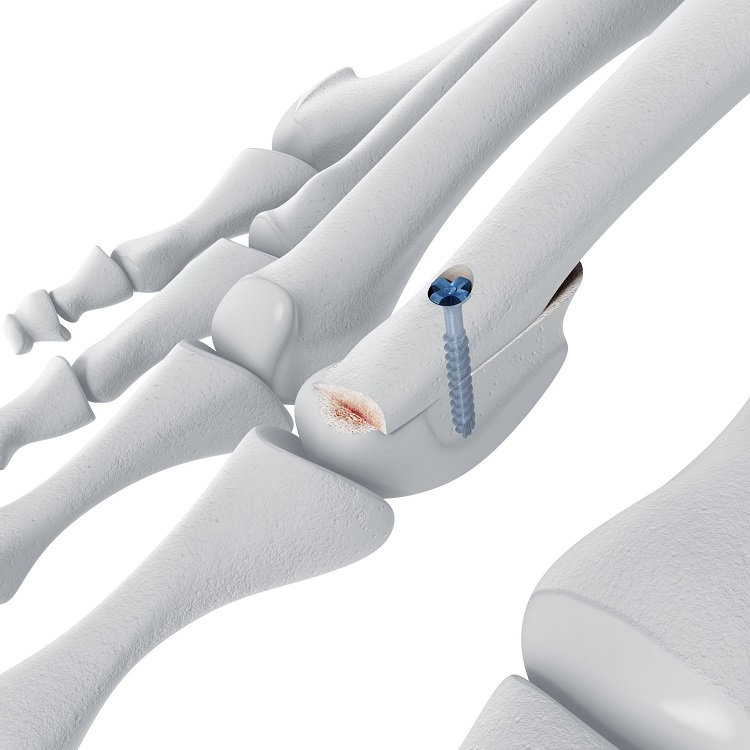One needs to be extra cautious in the matter of using and handling of screws. However, in the past, the optimal torque and the maximum possible torque were considered the same i.e. very close to the verge of failure. But this notion is no longer hold validity.
In view of practical use of screw, the principle of safe application should be followed by the surgeon. The surgeon should strive for best axial compression not for the highest axial force. As a general rule, a screw should not be tightened to its limits of strength or resiliency, but about to 2/3rd of these limits, to allow resistance to any extra functional loading.
In conventional plating, the inclination of the screws in relation to the long axis of the locking bone plates can be chosen to provide optimal lag screw effect or to by pass either a comminuted area or a fracture line in the cortex remote from the plate. The purchase of the screw in the remote cortex then locks the inclination of the screw. But when one considers the unicortical screws the required angular stability must be provided by the specific design of the screw i.e. its head-to-plate locking process. This locking is provided by a tightly fitted “morse cone” or a cone shaped thread. For this type of setting, the term “locked screw” is used. It is not safer and easier to apply these locked screws.
But there are some limitation of their use. As application of these screws is restricted to procedures where less emphasis on lag screw compression. Moreover, in least invasive techniques locked screws are being used continuously and superseding the use of dynamic condylar screw and the angled blade.
Positioning the screw in the fracture plane
Lag screws can be used efficiently when it is positioned perpendicularly in the fracture surface, for example, in a spiral fracture, the fracture plane is subject to the compression by the screw and compression along the long axis of the bone. A screw’s perfect inclination is when it is more perpendicular to the long axis of the bone. This may lead to the sliding of the fracture or so on. The optimal function of the lag screw in maximum cases can be achieved and provided by its perpendicular position in relation to the fracture plane. That’s why this inclination is highly suggested.
The position of the screws in a long spiral fracture must adhere to the spiral plane of the fracture. It is essential for the better stability. A considerable stripping of soft tissues and periosteum from the bone becomes necessary in such a procedure that further leads to obvious damage to the circulation periosteal. So to achieve the aim of indirect reduction of the fracture and minimal denudation of bone, it becomes very important to consider biology in clinical application of lag screws.
 HammBurg Be informed with latest news, reviews, entertainment, lifestyle tips, and much more.
HammBurg Be informed with latest news, reviews, entertainment, lifestyle tips, and much more.




